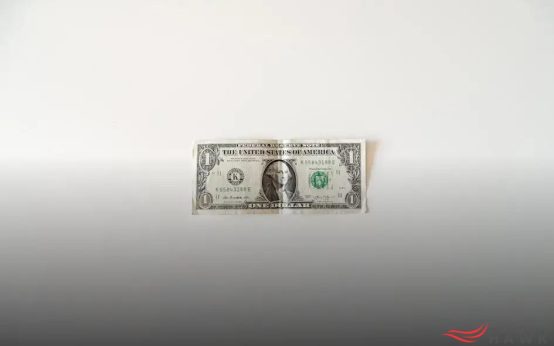The Rise of Stablecoins like USDT and USDC has reshaped the financial landscape. But which is safer for your investments? Understanding the key features and risks associated with these stablecoins can help you make informed decisions. Dive into this exploration to see how USDT and USDC measure up against each other in terms of safety and market perception.
Understanding Stablecoins: A Brief Overview
Stablecoins are designed to introduce stability in the highly volatile world of cryptocurrencies. Unlike typical cryptocurrencies such as Bitcoin or Ethereum, stablecoins aim to maintain a constant value by being pegged to a stable asset, like the US dollar, gold, or even a combination of multiple assets. This ensures that their value remains relatively stable even when the broader cryptocurrency market experiences fluctuations.
Among the most popular stablecoins in the market today are USDT (Tether) and USDC (USD Coin). These stablecoins have swiftly gained traction due to their promise of steadiness, making them appealing to both individuals and businesses looking for a digital currency that can be used for everyday transactions without the fear of sudden devaluation.
The mechanism behind stablecoins like USDT and USDC is generally the collateralization and regular auditing of reserves. By ensuring that there is enough real-world asset backing the coined currency, these stablecoins strive to nurture trust and reliability among users. As digital currencies continue to proliferate, understanding the fundamental structures and operations of stablecoins is imperative for anyone looking to navigate the crypto ecosystem.
A quintessential part of analyzing stablecoins is examining how they maintain their pegs and the role regulations play in influencing their operations. This lays the groundwork for understanding the inherent strengths and vulnerabilities of different stablecoins and provides insight into which might offer greater security.
USDT: Key Features and Risks Explained

USDT, known as Tether, is a prominent stablecoin in the cryptocurrency world. Its primary feature is that it is pegged to the US dollar, striving to maintain a 1:1 value ratio. This peg is designed to reduce the volatility commonly associated with cryptocurrencies, making USDT a popular choice for traders looking to move value quickly without being exposed to the market’s ups and downs.
One of the key features of USDT is its liquidity. With widespread acceptance across numerous exchanges, USDT provides an efficient way for users to enter and exit other cryptocurrency positions. It is used extensively for trading, as a hedge against volatility, and even as a form of collateral in various decentralized finance (DeFi) applications.
Despite its widespread use, USDT is not without risks. Concerns have been raised regarding its transparency and the sufficiency of the reserves backing the token. Critics argue that without regular, comprehensive audits, the claim that every USDT is backed by a dollar or equivalent asset remains unverified. Additionally, the centralized control by Tether Limited over the issuance and redemption of USDT introduces counterparty risk, which is absent in some other decentralized cryptocurrencies.
Another risk involves regulatory scrutiny. As stablecoins gain popularity, they’ve caught the attention of regulators worldwide. The need for a clear compliance framework poses challenges, and any adverse regulatory actions could impact their stability and usage.
USDC: Safety Measures and Market Perceptions
The rise of stablecoins has brought financial innovation by minimizing the volatility typically associated with cryptocurrencies. In the context of USDC, understanding its safety measures is crucial for dissecting its role and acceptance in the market.
USDC distinguishes itself through transparency and regulatory compliance. Managed by Circle and Coinbase under the CENTRE Consortium, USDC emphasizes full reserve backing, where each token is fully backed by U.S. dollar reserves regularly audited by a reputable accounting firm. This ensures that the USDC in circulation is supported by equivalent fiat currency, an essential notion for maintaining trust.
Another aspect of USDC’s safety involves its regulatory framework. USDC operates under the established guidelines of U.S. financial regulation, setting it apart from some competitors. These regulations include stringent Know Your Customer (KYC) and Anti-Money Laundering (AML) requirements, which add an additional layer of confidence for users and regulators.
Market Perceptions
From a market perspective, USDC has carved out a reputation for being secure and transparent, often perceived as a safer alternative in the stablecoin landscape. This perception is reinforced by its integration into a wide array of exchanges and growing acceptance in decentralized finance (DeFi) applications, where stability is paramount.
However, it’s vital to consider that while USDC provides transparency and regulatory compliance, it is also subject to governmental oversight, which some users may view as a disadvantage due to potential influence by external regulatory entities. Despite these considerations, market data generally indicates a high level of trust and widespread utilization of USDC, enhancing its role as a bridge between the conventional financial system and the world of cryptocurrencies.
Comparing USDT and USDC: Which Offers More Security?

When evaluating the security of USDT and USDC, it’s crucial to consider several factors that influence user trust and protection. Both of these stablecoins are pegged to the US dollar, but their security measures and market perceptions present notable differences.
Regulation and Transparency
USDC is issued by Circle and Coinbase, operating under a transparent framework with regular audits to prove its reserves. This transparency is a significant advantage, as it prompts user confidence in the stability and security of their investments.
In contrast, USDT, issued by Tether, has faced scrutiny over its reserve transparency. Although Tether claims that USDT is fully backed, inconsistencies in transparency have been a concern, affecting perceptions of its security among investors.
Backing and Audit Practices
Circles’s USDC boasts regular audits by third-party firms, ensuring that every coin in circulation is indeed backed by a corresponding dollar. These practices are designed to give peace of mind to users about the security of their holdings.
Tether’s USDT, however, has been criticized for less frequent audits and a lack of detailed disclosure about its full reserves. This has led to debates and skepticism, particularly regarding the mixture of cash and other assets used to back USDT.
Market Adoption and Liquidity
Despite the controversies, USDT remains one of the most widely used stablecoins in cryptocurrency trading, offering high liquidity and integration with many exchanges. This widespread adoption can add a layer of perceived security through liquidity depth.
USDC, though slightly less prevalent in trade volumes than USDT, is widely regarded as the ‘safer’ option due to its commitment to regulatory compliance and transparent operational model.
A thorough analysis of both USDT and USDC underscores the varying priorities users might have—some may value regulatory assurance and transparency with USDC, while others might prioritize liquidity and established market presence with USDT.





